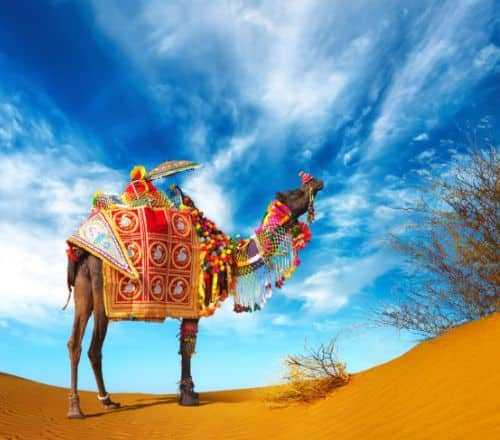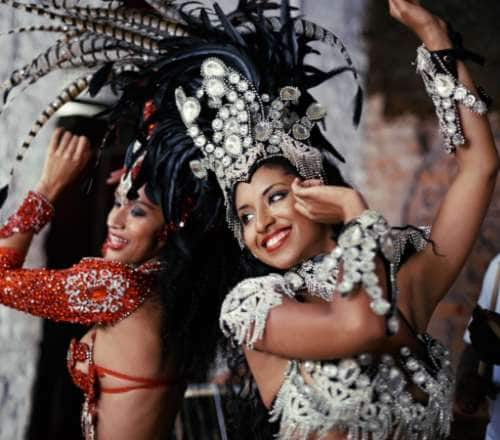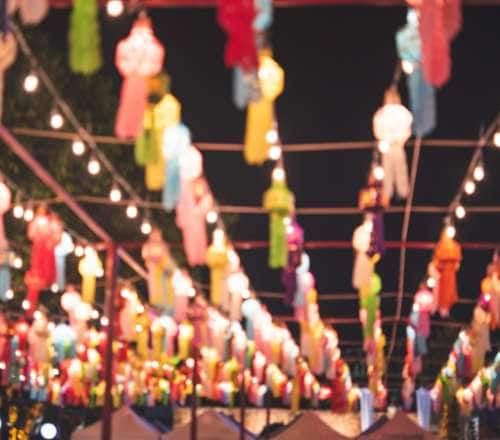Stay logged in to proceed with bookings, orders and offers.
On changing the terminal, you will loose items in your cart. Are you sure you want to change your terminal?
Experience the magic of the Obon Festival in Japan, with bonfires and fireworks illuminating the night as the Japanese welcome the spirits of their ancestors.
I was enamoured by the story behind the Obon Festival in Japan, which reminded me of Halloween in some ways. If you're fascinated by cultures, folklore, and festivals, Japan is the place to be during the Obon Festival. Here's how it all started.
The story is deeply rooted in ancient Buddhist beliefs. It is believed that the 'Realm of the Hungry Souls' is believed to be a place where the souls of our ancestors are punished for the bad deeds they committed during their lives on earth. It is thought that the mother of Maha Maudgalyayana, who was a disciple of Gautama Buddha, was trapped in this realm.
The spirits in this realm are believed to exist in a constant state of unrest, tormented by an insatiable hunger. Troubled by this knowledge, he asked the Buddha for guidance to free his mother from this miserable fate. The Buddha advised his disciple to make an offering to the monks returning from a summer retreat on the thirteenth day of the seventh month of the year. This ritual freed his mother from the tortured realm and marked the beginning of a 500-year ritual that Japan celebrates to the present day — the Obon Festival.
The Obon Festival, simply known as Bon among locals, is a three-day celebration where the people of Japan come together to commemorate the spirits of their deceased ancestors. Although the festival may evoke grim thoughts of death and grief, Bon is a celebration with swaying dances and sparkling fireworks.
Japan celebrates Bon in both July and August, but the exact dates differ as the solar and lunar calendars vary in their seventh month depending on the region. In Eastern Japan, which follows the solar calendar, Shichigatou Bon, or the Bon of July, is celebrated from 13–15 July. This is followed by the Yokohama and Tohoko regions of Tokyo. On the other hand, Hachigatou Bon, which is also known as the Bon of August, is observed from 13–15 August, in Kyoto, Tokushima, Nagasaki and Okinawa, which follow the lunar calendar.
The Bon festival begins with the lighting of a welcome fire, called Mukaebi, as revellers visit the graves of their ancestors to invite them home. The foothills of the country are adorned by flames from the two sacramental candlelight ceremonies: Sento, which means 'a thousand lights', and Manto, which means 'ten thousand lights'. Temples and households hang lanterns to call to the spirits and pray to the Buddha in memory of the departed souls. Thousands of candles are lit around the precinct which makes for a mesmerising sight that is sure to leave you spellbound!
Several temples across the country host candlelight ceremonies during the Obon festivities. This spectacle is open to locals and tourists alike to watch and take part in. The Daigo-ji Temple at Daigo, Rokuharamitsu-ji Temple, the Kurumazaki-jinja Shrine, and the Mibu Temple in Kyoto are some of the notable sites to witness the Sento and Manto ceremonies.
The highlight of the Bon festival is the dance of the Bon or the Bon Odori, which is the traditional dance of the festival. The neighbourhoods of the country transform into a feast for the senses. The streets and parks are studded with vibrant pinks, reds and blues as people step out in their yukata, the traditional Japanese attire.
Kyoto, Gujo, and Hokkaido are some of the most popular places to see Bon Odori. The Hokkai Bon Odori in Sapporo, Hokkaido, is the perfect warmup to the Bon festival. The main feature of the Hokkai Bon is the yagura, a bonfire lit on wooden scaffolding. People flock to Odori Park and dance around to drum sequences. Watching people dance in their traditional Japanese robes is a beautiful sight. Everyone, including the young and the old, joins the dance. It's easy to learn the dance steps; just follow the person next to you.
Above all, the aroma of takoyaki and yakitori — octopus and chicken delicacies — will invite you to long lineups of street food stalls that exude the authenticity of Japanese cuisine. If you're feeling adventurous, be sure to try the octopus delicacies. The chicken dishes are also worth sampling.
The Gifu prefecture hosts the Gujo Odori Festival, which commences in July and lasts till September — outlasting the Bon itself. The festival's origin dates back to the Edo period when a lord from the Endo clan sought to bring people of all classes together. Due to this spirit of inclusivity, the festival invites tourists to learn the Gujo dances. Gujo Odori lasts from sunset to sunrise and centres around the temples and shrines around the city. The festival includes ten dances, allowing people to express their joy in energetic leaps and prances.
The Daimonji Festival — better known as Gozan no Okuribi in Kyoto — is a stunning spectacle that is not to be missed. During the festival, you will see the mountains of the city illuminated with bonfires. The Daimonji festival marks the end of Bon, as the bonfires bid farewell to the ancestral spirits and allow them to move on to a serene afterlife.
The word 'Daimonji' translates to 'large character', symbolising the characters of the word cut into the flora of the mountains, which are then lit up by the bonfires. The characters are ignited in a sequence of fires, starting at 8:00 pm, and the 'word' is fully ablaze by 8:30 pm. It is visible from every corner of the city. The bonfires are best viewed from the tops of buildings and hotels, where special events are often organised to mark the occasion.
The Obon Festival comes to a close with the Okuribi, a fire that is lit to bid adieu to the ancestral spirits. As part of the ritual, the people of Japan release the Toro Nagashi — special Bon lanterns — into the nearest water bodies to guide them on their passage to the afterlife.
The Japanese welcome visitors to partake in the grand Obon festivities, especially those who wish to pray for a peaceful afterlife for the spirits of their deceased loved ones. When planning your trip to Japan, be sure to consider the region you wish to visit and the corresponding dates of the festival according to the solar or lunar calendars. I was in Japan in August. Make sure you book your lodging well in advance as it is usually difficult to find any accommodation here during the festival. Most of these places in Japan are easily accessible by subway or metro.
Woven in nostalgia and felicitations, the Obon Festival is a magnificent ode to the dead and a significant celebration of grief. The end of this festival is sure to leave you with a sense of longing to experience it again. It will also fill you with fond memories of your departed ancestors.





The Adani One expressly disclaims all liability, direct and indirect, in respect to actions taken or not taken based on any or all the contents of this Blog. The Blog is an opinion of the contributor based on the collation of data from various sources and is provided only for information purpose. Adani One does not canvass, advertise, solicit, invite or induct for any product, merchandise, information, brand or any other materials mentioned in the Blog, nor does it obtain any monetary benefit from the same. Reader is advised to read and apply his/her intellect and discretion in this regard. Any Intellectual Property mentioned in this blog belongs to the rightful owner. We do not intent to claim any interest over the same.